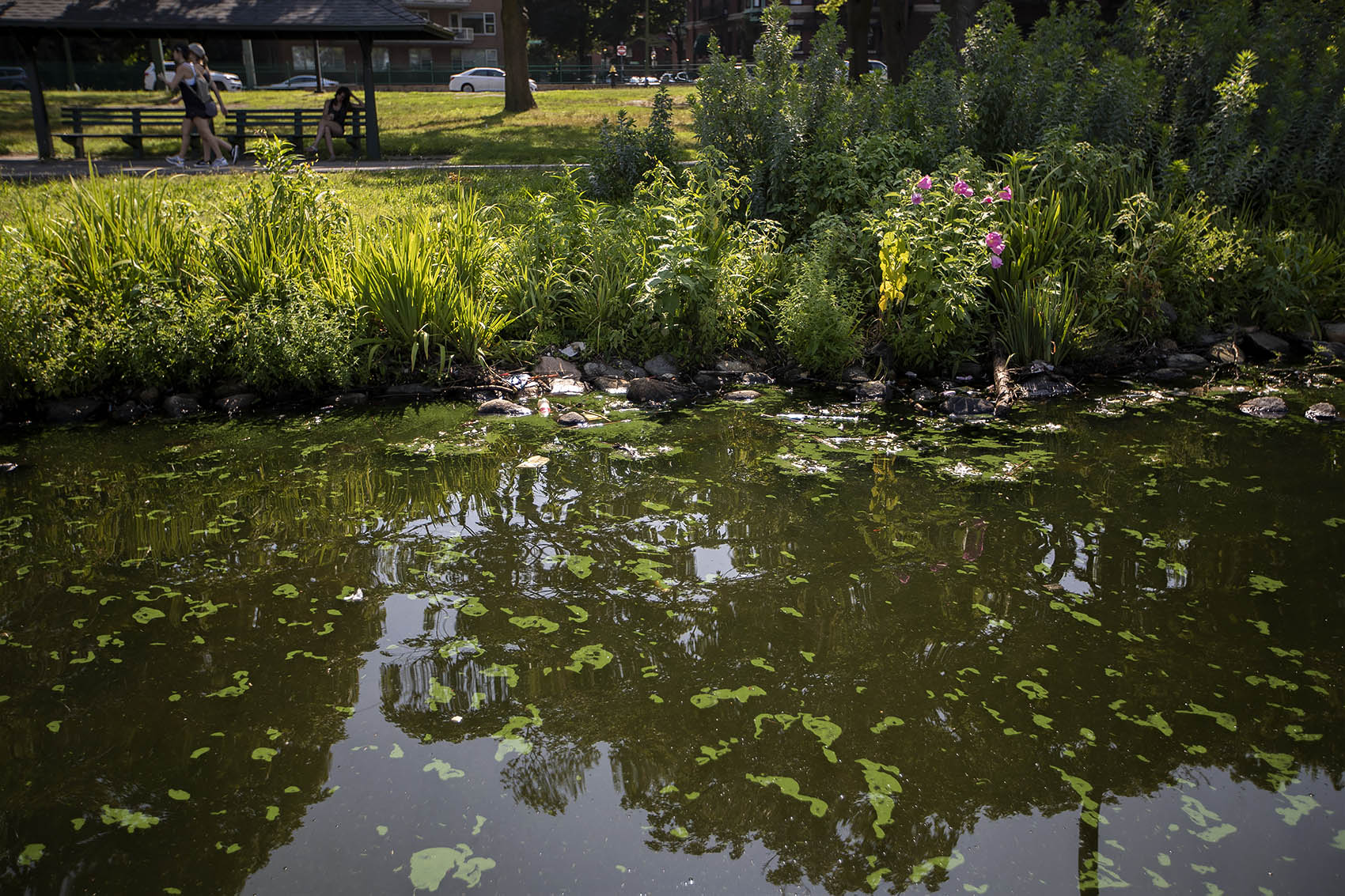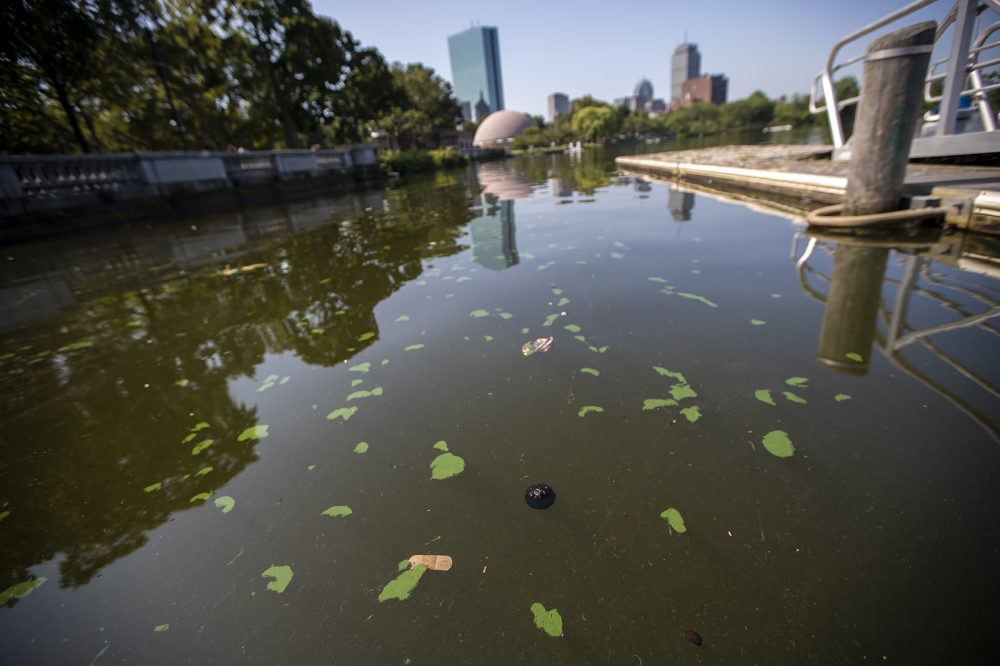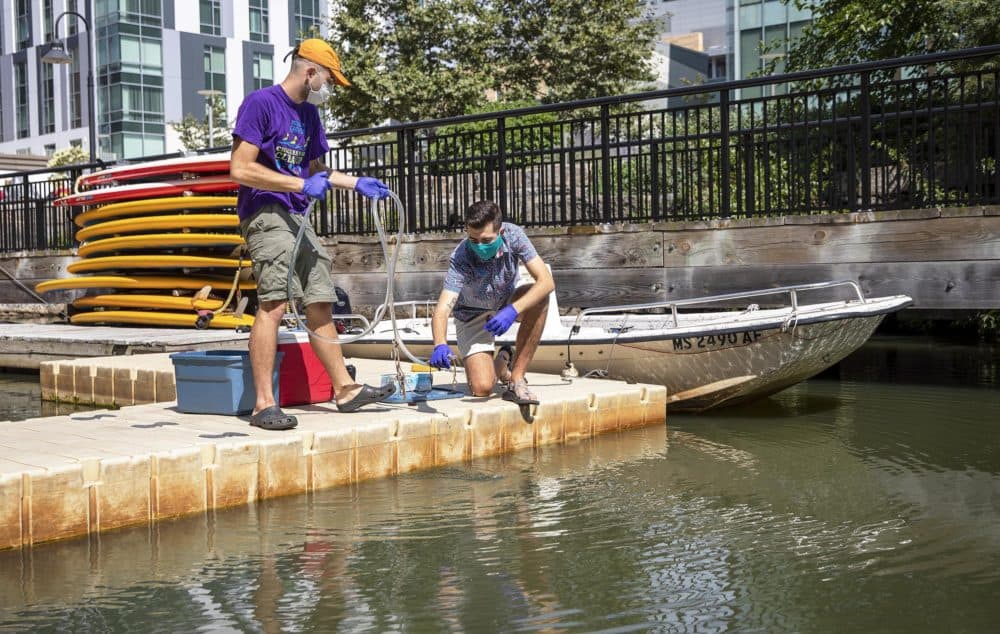Advertisement
EPA Moves To Reduce Runoff That Feeds Toxic Algae In Charles River

The Charles River has been hit by toxic algae blooms almost every summer in recent years. The blooms — which can be dangerous for people, pets and the river's ecosystem — are fed by hot sunny days and storm runoff containing nutrients, especially phosphorus.
Now the Environmental Protection Agency Region 1, which oversees New England, is reaching out to private institutions in the Charles River watershed to discuss ways to reduce stormwater pollution in the river. This process may lead to new permitting requirements for large private properties in the watershed, according to an Aug. 13 letter the EPA sent to stakeholders.
If the agency finds it necessary, "certain commercial, industrial, and institutional properties in the Charles River watershed — like office parks, industrial parks, shopping centers, private colleges and universities, and hospitals — would be subject to new federal Clean Water Act stormwater permits," reads the letter. "EPA seeks to explore the development of a workable and practical permitting approach."
About 20 years ago, the EPA began requiring that smaller cities and towns, like many of those along the Charles, control stormwater pollution. But it's now become clear that some privately-owned sources of pollution have have been left unregulated.
The EPA is launching the discussions in response to a petition from the Charles River Watershed Association and the Boston-based Conservation Law Foundation (CLF). In May 2019, the two groups petitioned the EPA to use its authority under the Clean Water Act to limit storm runoff into the Charles. Specifically, the groups asked the EPA to use its “residual designation authority” to require that certain private institutions in the Charles River watershed get a permit to discharge stormwater into the river.
The EPA plans to launch webinars in September, and continue with stakeholder discussions through the fall.

Although the agency has not established a deadline for a final decision on permitting, environmental advocates say the discussions are a good start. “I do think this is a step in the right direction for EPA," said Heather Govern, director of the Clean Air and Water Program at the CLF, "and in our eyes a good sign that a permitting program is on the horizon."
EPA officials said a final decision on permitting was still unclear.
"We haven't made a decision about whether to move forward with a permitting program — the petition does ask us to do that, and we need to make that decision," said Ken Moraff, director of the Water Division at EPA Region 1. "But before we make it, we want to get the views of all the stakeholders, including the owners of these properties, including environmental groups, including the cities and towns in the watershed who are all working really hard to reduce phosphorus from their own systems."
Currently the burden of monitoring and preventing stormwater pollution falls upon municipalities.
"The town is essentially responsible for all the rainwater runoff that occurs in their town, whether it falls on private property or public property," said Julie Wood, deputy director of the Charles River Watershed Association (CRWA). Wood notes that in most cities and towns in along the Charles River, the majority of the land area is privately-owned, not public. So private property owners "can just sort of throw [their] polluted water into the road and expect the town to take care of it."

Phosphorous comes from multiple sources, including fertilizer, animal waste and detergents, all of which can swept into stormwater. In a 2007 study, the MassDEP and the EPA found that high-density residential, commercial and industrial properties made up just 20% of the land cover in the lower Charles River Basin, but produced nearly half the phosphorous pollution.
“There are so many stormwater contributors on the Charles that don't fall into any other permitting program," said CLF's Govern. "To have the burden of preventing stormwater pollution sit entirely with the municipalities, which is what has been happening for decades, it's unfair."
The EPA agrees.
"Every city and town is working to reduce phosphorus in their municipal stormwater system," said EPA's Moraff. "But a lot of the phosphorus comes from private land that the municipalities don't manage."
If large private-property owners were eventually required to limit the amount of phosphorous they discharge into stormwater, solutions could include changing or reducing fertilizer use, or constructing rain gardens or other systems to intercept runoff.
Julie Wood from CRWA says that green infrastructure like rain gardens has added benefits, like reducing flooding and beautifying the landscape. Still, she expects some pushback from property owners: "In my experience, regulated entities don't always stand up and welcome a new permit process," she said.
Although this EPA action involves only the Charles River, stormwater pollution and toxic algae blooms affect many other rivers and lakes throughout the region. CLF's Govern said that her organization is planning to submit additional petitions for other New England watersheds.
